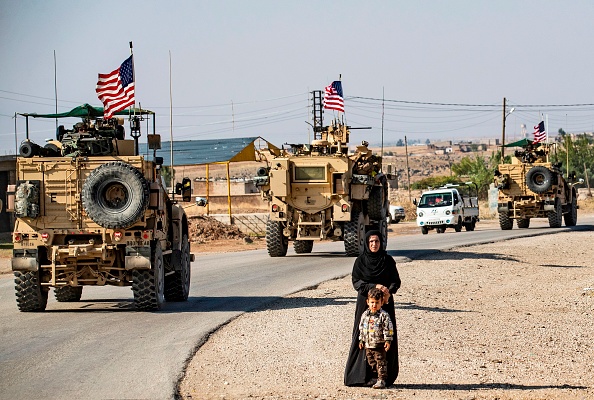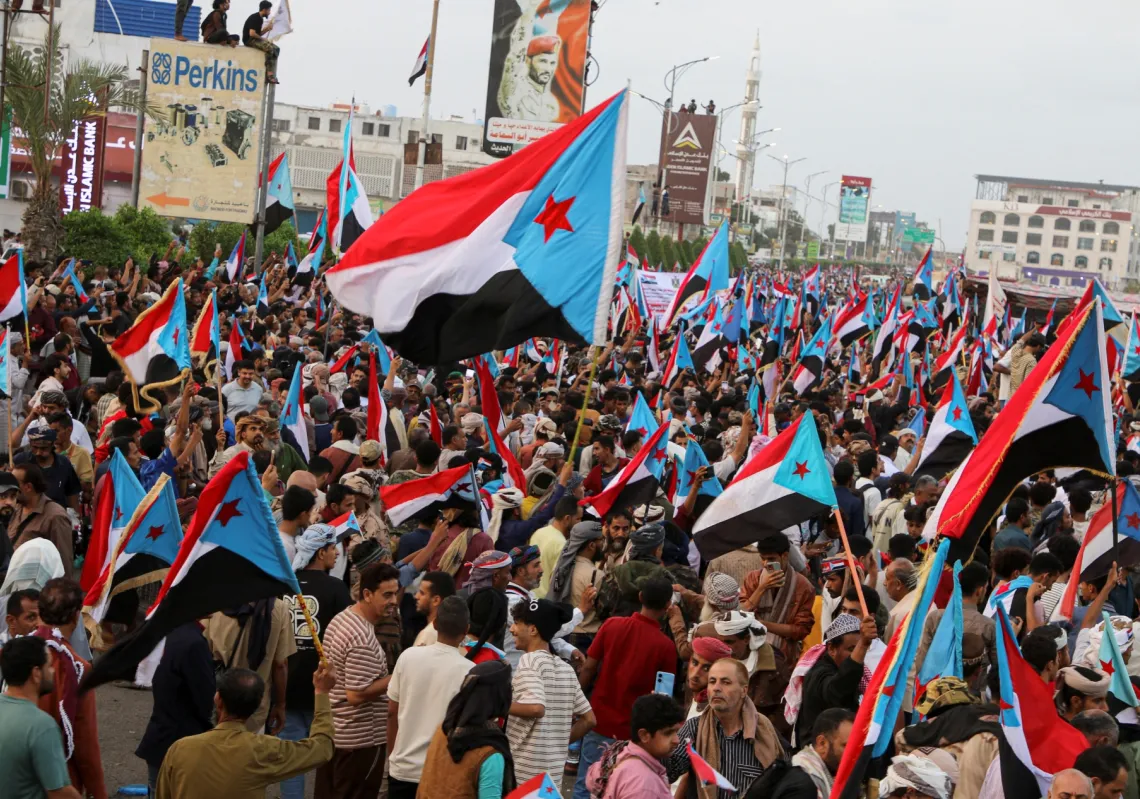In December 2019, just two months after U.S. President Donald Trump withdrew most U.S. forces from Syria, I crossed into the country from Iraq for my seventh visit since August 2017. A Turkish offensive against the Kurds had upended northeastern Syria in October, making a region that had been an experiment in democratic self-rule at the time of my last visit, in May 2019, an uneasy patchwork of competing dominions. I expected to find signs of the Turkish presence everywhere, along with Russian and Syrian regime checkpoints at every pass; perhaps local people would be shuttered indoors, waiting to see what the great powers would force on their future.
What I found instead was at once heartening and devastating. Some scenes of hardship were indelible: children, forced from their homes by the Turkish offensive, now sat out of school in freezing, hastily constructed camps, without coats and with their small bare feet poking out of plastic sandals covered in mud spawned by the incessant rain. But also striking was the region’s hard-fought stability despite its deep scars. The Kurdish-led Syrian Democratic Forces, known as the SDF, has done a heroic job of holding the northeastern region together, providing some security to the region’s traumatized people under conditions that would try most nation-states, and sustaining the governance model that it had earlier established to a remarkable degree.
But Syria now needs a political settlement more than ever. The SDF cannot continue to the hold the line, plus rebuild ruined cities, reabsorb displaced people, and resist incursions from Turkey and ISIS, without robust and credible commitments from the outside powers that hold the country’s fate in hand, including a serious effort to broker talks between Turkey and the Kurds. The United States, Russia, and other outside actors all benefit from the stability that the SDF brings to northeastern Syria, and they should take an interest in securing the region’s future.
A FRAGILE EQUILIBRIUM
A precarious but effective normalcy has held in parts of northeastern Syria fortunate enough to have fallen outside the radius of the Turkish offensive. When I visited these areas in December, the United States was again conducting joint operations with the SDF against ISIS. Cities from Qamishli to Hasakah were governed much as they had been before the Turkish offensive, and the SDF was in charge of all their checkpoints. The SDF’s authority has proved highly durable, despite the group’s status as a nonstate actor in a region where great powers are shifting the tectonic plates all around.
The buzz of ordinary life is lulling amid the still uncleared wreckage of the 2017 campaign to rout ISIS from its self-styled capital. In Raqqa, a new café overlooks Naim Square, recently renovated. This is the site where ISIS used to behead people. Now families snack on French fries, while groups of men drink squat cups of coffee and smoke shisha. The city hums with generators, and the people I spoke with worried mostly about the security and the collapsing value of the Syrian pound. I watched children play an intense match of soccer on the carcass of a bombed-out building. At a gleaming, newly renovated restaurant, crowds of lunch-goers impatiently waited for the white plastic bags holding their takeout—steaming famous Raqqa pizzas, with and without meat. The checkpoints here, too, were much the same as they had been last year and the year before.
But underneath, the change is profound. A year ago, SDF forces controlled the area, backed by a small, nearly invisible U.S. presence. On this visit, in the course of just a few hours’ drive between Hasakah and Ain Issa, I saw convoys flying Russian, Syrian regime, and U.S. flags. What had been a U.S. base in Ain Issa now flew a Russian flag. And the best road between Hasakah and Kobani has become unusable because of security concerns following Turkey’s military attack, forcing Syrians to take a minimum three-hour, poorly paved detour. Trucks lined up to pass the uneven and pockmarked road.
Turkey’s offensive undermined the stability of northeastern Syria and the fight against ISIS. The forces engaged in that fight have had to divert resources to defend themselves. NGOs, some of which did important work to assist the populace, including providing medical care to those who most needed it, were forced to flee, as were thousands of civilians in the towns of Ras al-Ain and Tel Abyad. ISIS has more room to maneuver amid the upheaval. And the question of how to deal with the group’s followers and families remains urgent and unresolved. Many, including ISIS followers from overseas, are indefinitely confined to the Hol camp, in Hasakah Province, where security and material needs are pressing, resources few, and international support wildly insufficient.
Turkey’s incursion also displaced more than 200,000 civilians, and the administration the Kurds established in 2012—run through civil councils led by Arabs as well as Kurds—have been left to deal with the aftermath. The SDF sent the heavy equipment, and the Barzani Charity Foundation in northern Iraq sent donations, to turn a bare plot of land into a camp for the displaced in the town of Hasakah. A woman I met there told me that her husband had sent her and the children away as soon as Turkish-backed forces entered their town of Ras al-Ain. Her teenage daughter drove the family out in their tractor. Now that daughter was waiting in line to secure a tent for the family to sleep in. A teacher from the same town told me that his house had been stripped down to the electric wires by Turkish-backed forces who looted everything he owned. There would be nothing like normalcy for these uprooted communities for a long time to come.

THE MAN IN THE MIDDLE
Northeastern Syria is today an uncertain territory, buffeted by great-power politics, ravaged by fighting, and staving off both Turkey and ISIS. Only a political resolution to the Syrian conflict can yield a durable peace for the region. But whether such a settlement is possible depends on the actions of outside powers.
Russia could push the Syrian regime to cut a deal sustaining the northeast’s autonomy. But at the time of my visit, the SDF was concerned that Moscow may instead give Turkey permission to launch a new offensive against the town of Kobani, where the United States and the Syrian Kurds handed ISIS its first defeat five years ago, and where regime and Russian forces now patrol.
The U.S. presence in Syria provides the SDF some diplomatic leverage and space. But for how long the United States is committed, and whether it plans to contribute its diplomatic muscle to the cause of those whose valiance it once praised in the ISIS fight, has been an open question at least since October, if not longer. The recent upsurge in tension between the United States and Iran has complicated the calculus over Syria still further. The Iraqi parliament has asked the United States to withdraw its forces from Iraq. But if the United States were to do so, it would almost certainly be forced to pull out of Syria as well, because logistics support for the troops in Syria depends on the U.S. presence in Iraq.
A U.S. withdrawal would undermine the SDF’s leverage to counter Russia and the Syrian regime. Meanwhile, if the Turks do attack Kobani, more upheaval and displacement will follow. An SDF forced to both fight Turkey and protect its citizens cannot also prioritize the ISIS fight.
The man at the center of all of these pressures is the head of the SDF, Mazloum Abdi Kobani, a military strategist whom the United States respects for his intense calm and ability to deliver, as he did as in helping U.S. forces to defeat ISIS militarily and to locate its leader, Abu Bakr al-Baghdadi. Now Mazloum must tread a diplomatic tightrope, balancing rival powers as he works toward a political solution that protects the gains that the Syrian Kurds have made since 2011.
When I met with Mazloum in December, he told me that the SDF did not have the luxury of choosing between the United States and Russia. It needed the support of both in order to safeguard the area and work toward a political settlement. The political process, in Mazloum’s view, contains the key to solving most other issues, from restraining ISIS to keeping oil profits out of the group’s hands.
Mazloum stressed that while the United States should not stay in Syria forever, neither should it leave before a political process was underway. “Right now, we have a kind of equilibrium in place with the Americans here. Without the Americans, the situation would be different and far worse,” he said. “Everyone is waiting for the United States to pull out so that they can pursue their agenda in the region: the Turks, the Syrian regime, the Russians, the Iranians.”
Late last fall, a bipartisan group of senators wrote to the State Department seeking an expedited visa for Mazloum to visit the United States and meet with policymakers. Turkey responded with ire, and even some inside the U.S. State Department opposed the idea. But the effort is still active, and Mazloum said he would accept the invitation if offered.
“I would like to come to the United States to speak directly to the people who make the decisions, and to speak to the American public,” he said. The groundswell of support from the U.S. Congress, news media, and public had buoyed the Kurds’ cause during Turkey’s offensive, he told me. “In the past, people said that the Kurds only called the mountains their friends, but now we’ve seen that that’s not true. We could feel the public’s support and that really has given us hope.”
Yet October’s events made clear that hope is not a strategy, nor is pinning the Kurds’ future exclusively on U.S. commitments. “We want to protect what we have achieved together, including Kobani,” Mazloum told me. But, he added with a knowing smile, “We have learned here that everything is possible. We should be prepared for whatever comes.”
This article was originally published on ForeignAffairs.com.









